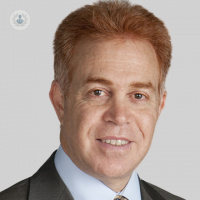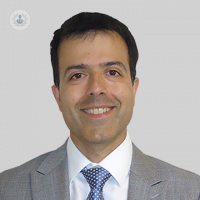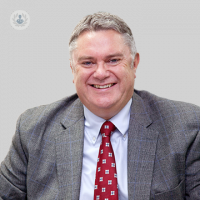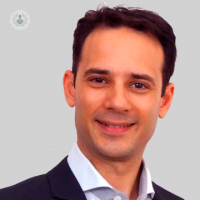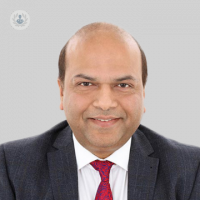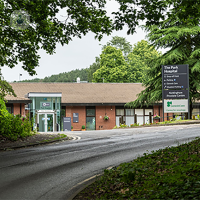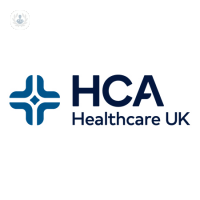What is pinnaplasty?
Ear correction surgery, where the ears are pinned back, is known as pinnaplasty or otoplasty. The cosmetic surgery procedure is used to change the shape of the ears, or to pin them back if they stick out. It is usually carried out on children and teenagers, but some adults may opt to have the procedure, too. Children under the age of five are unable to have pinnaplasty as their ears are still developing and growing.
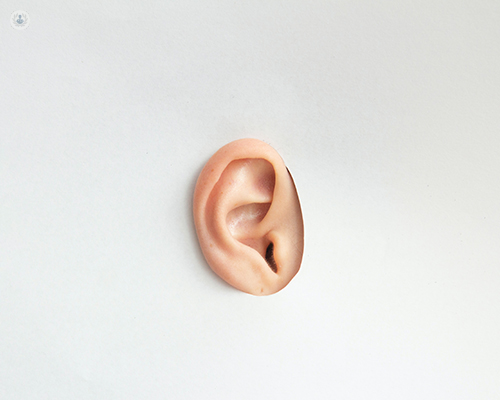
What happens during a pinnaplasty?
Pinnaplasty is performed under general anaesthetic, however some surgons may offer the procedure under local anaesthetic depending on the age of the patient. The operation usually takes about one to two hours. The surgeon will make a cut to the back of the ear and peel off some skin from the cartilage. The shape of the cartilage is changed so that the ear is closer to the head. The doctor can also correct the symmetry of the ears. The wounds are then closed with dissolvable stitches and a dressing is applied.
There is a newer technique known as incisionless otoplasty to treat prominent ears, which involves scoring the cartilage through the ear skin using a needle. No incision is made. There is not a lot of evidence about the long-term quality of this procedure.
What happens after pinnaplasty?
Following surgery, the ears may be sore, tender, or numb for a few days and the patient may need to wear a bandage around their head. They will not be able to wash their hair for a few days whilst leaving the dressing on to protect the ears from infection. It is useful to sleep upright for a few nights following surgery.
There may be bruising for a few weeks and it is recommended taking the time off school or work to let these heal. The stitches may come to the surface and cause the ear to feel sore, which can be treated with over-the-counter pain medications.
What are the possible complications of pinnaplasty?
Complications are unusual. There can be a collection of blood between the skin and the cartilage, which creates 'cauliflower ear'. On some occasions, the skin may scab and the patient must be very careful with their dressings to ensure that underlying cartilage is not exposed, dried out, or infected. If it does dry out, then it can cause a misshapen ear and another procedure will be needed to repair the hole with a skin graft. If the area is red, swollen, or painful post-operation, this may be a sign of infection and the patient should consult their doctor.
Is there a difference between pinnaplasty and otoplasty?
No, there is no difference between pinnaplasty and otoplasty. They are different names for the same procedure.
Will pinnaplasty change the overall appearance of my face?
Many people who are considering pinnaplasty are worried that the procedure will drastically change their appearance and they will become unrecognisable. This is not the case. Pinnaplasty will only change the distance that your ears protrude out, with little to no change to the rest of your appearance.
04-28-2017 05-10-2023Ear correction surgery: pinnaplasty
Mr Abbad Toma - Otolaryngology / ENT
Created on: 04-28-2017
Updated on: 05-10-2023
Edited by: Conor Dunworth
What is pinnaplasty?
Ear correction surgery, where the ears are pinned back, is known as pinnaplasty or otoplasty. The cosmetic surgery procedure is used to change the shape of the ears, or to pin them back if they stick out. It is usually carried out on children and teenagers, but some adults may opt to have the procedure, too. Children under the age of five are unable to have pinnaplasty as their ears are still developing and growing.

What happens during a pinnaplasty?
Pinnaplasty is performed under general anaesthetic, however some surgons may offer the procedure under local anaesthetic depending on the age of the patient. The operation usually takes about one to two hours. The surgeon will make a cut to the back of the ear and peel off some skin from the cartilage. The shape of the cartilage is changed so that the ear is closer to the head. The doctor can also correct the symmetry of the ears. The wounds are then closed with dissolvable stitches and a dressing is applied.
There is a newer technique known as incisionless otoplasty to treat prominent ears, which involves scoring the cartilage through the ear skin using a needle. No incision is made. There is not a lot of evidence about the long-term quality of this procedure.
What happens after pinnaplasty?
Following surgery, the ears may be sore, tender, or numb for a few days and the patient may need to wear a bandage around their head. They will not be able to wash their hair for a few days whilst leaving the dressing on to protect the ears from infection. It is useful to sleep upright for a few nights following surgery.
There may be bruising for a few weeks and it is recommended taking the time off school or work to let these heal. The stitches may come to the surface and cause the ear to feel sore, which can be treated with over-the-counter pain medications.
What are the possible complications of pinnaplasty?
Complications are unusual. There can be a collection of blood between the skin and the cartilage, which creates 'cauliflower ear'. On some occasions, the skin may scab and the patient must be very careful with their dressings to ensure that underlying cartilage is not exposed, dried out, or infected. If it does dry out, then it can cause a misshapen ear and another procedure will be needed to repair the hole with a skin graft. If the area is red, swollen, or painful post-operation, this may be a sign of infection and the patient should consult their doctor.
Is there a difference between pinnaplasty and otoplasty?
No, there is no difference between pinnaplasty and otoplasty. They are different names for the same procedure.
Will pinnaplasty change the overall appearance of my face?
Many people who are considering pinnaplasty are worried that the procedure will drastically change their appearance and they will become unrecognisable. This is not the case. Pinnaplasty will only change the distance that your ears protrude out, with little to no change to the rest of your appearance.
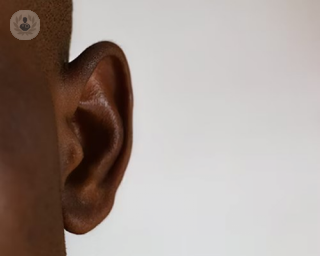

Ears and expertise: An insight into pinnaplasty
By Mr Simon Eccles
2025-01-20
In his latest online article, Mr Simon Eccles give us his insights into pinnaplasty, also known as otoplasty, is a surgical procedure designed to correct prominent ears. Ear shape can vary significantly, and it is not uncommon for individuals to have ears that differ from each other. While ear cartilage becomes firmer with age, 90% of ear growth is typically completed by the age of 8. Pinnaplasty is a versatile procedure that can be performed at any age, from childhood to adulthood. Common concerns that lead people to consider pinnaplasty include asymmetrical ears and ears that protrude excessively from the sides of the head. These issues often result from a lack of proper ear cartilage folding, known as the anti-helical fold, and an overpronounced "concha" or bowl part of the ear. In some cases, both factors contribute to ear prominence. See more
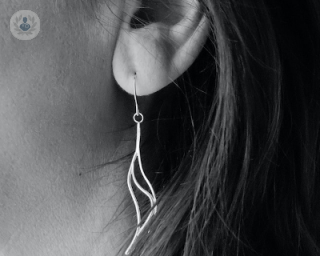

Pinnaplasty: A procedure to correct prominent ears
By Mr Anil Joshi
2025-01-19
Revered consultant ENT and facial plastic surgeon Mr Anil Joshi gives an expert guide to what is involved in pinnaplasty procedures in this informative article for patients. See more


Otoplasty: a step-by-step guide to the procedure
By Mr Anil Joshi
2025-01-18
Surgery to get your ears pinned back has evolved in recent years, and it’s now possible to reshape the ears without cutting the cartilage entirely. In this article, consultant ENT and facial plastic surgeon Mr Anil Joshi explains how modern surgeons approach ear surgery and what kind of recovery patients can expect. See more


Life after a pinnaplasty
By Mr Mike O`Connell
2025-01-18
A pinnaplasty (also known as otoplasty) is a straightforward operation to reset the outer ear or "pinna" to a more favourable position, closer to the side of the head, to make the ear appear less noticeable. Mr Mike O’Connell tells us more about the pinnaplasty procedure and what to expect after it. See more
Experts in Pinnaplasty
-
Professor Paul Chatrath
Otolaryngology / ENTExpert in:
- Septoplasty
- Tonsillitis
- Pinnaplasty
- Rhinitis
- Sinusitis
- Septorhinoplasty
-
Mr Abbad Toma
Otolaryngology / ENTExpert in:
- Rhinology
- Endoscopic sinus surgery
- Rhinoplasty (nose job)
- Pinnaplasty
- Rhinitis
- Septoplasty
-
Mr Timothy Mellor
Plastic surgeryExpert in:
- Blepharoplasty
- Brow lift
- Skin cancer on face
- Facelift
- Facial plastic surgery
- Pinnaplasty
-
Professor Kayvan Shokrollahi
Plastic surgeryExpert in:
- Laser
- Skin lesions
- Moles
- Pinnaplasty
- Basal cell carcinoma
- Skin cancer
-
Mr Anurag Jain
Otolaryngology / ENTExpert in:
- Thyroid surgery
- Paediatric ENT
- Endoscopic sinus surgery
- Snoring
- Salivary gland surgery
- Pinnaplasty
- See all

The Park Hospital - part of Circle Health Group
The Park Hospital - part of Circle Health Group
Sherwood Lodge Drive, Burntstump Country Park, Arnold, Nottinghamshire NG5 8RX
No existe teléfono en el centro.
By using the telephone number provided by TOP DOCTORS, you automatically agree to let us use your phone number for statistical and commercial purposes. For further information, read our Privacy Policy
Top Doctors

The Outpatients and Diagnostic Centre at 30 Devonshire Street (HCA)
The Outpatients and Diagnostic Centre at 30 Devonshire Street (HCA)
30 Devonshire St, London W1G 6PU
No existe teléfono en el centro.
By using the telephone number provided by TOP DOCTORS, you automatically agree to let us use your phone number for statistical and commercial purposes. For further information, read our Privacy Policy
Top Doctors

New Victoria Hospital
New Victoria Hospital
184 Coombe Lane West, Kingston upon Thames, KT2 7EG
No existe teléfono en el centro.
By using the telephone number provided by TOP DOCTORS, you automatically agree to let us use your phone number for statistical and commercial purposes. For further information, read our Privacy Policy
Top Doctors
-
The Park Hospital - part of Circle Health Group
Sherwood Lodge Drive, Burntstump Country Park, Arnold, Nottinghamshire NG5 8RX, ArnoldExpert in:
- General Surgery
- Maxillofacial Surgery
- Oral surgery
- Plastic surgery, reconstructive and aesthetics
- Obstetrics and Gynaecology
- Podiatry
-
The Outpatients and Diagnostic Centre at 30 Devonshire Street (HCA)
30 Devonshire St, London W1G 6PU, Central LondonExpert in:
- Orthopaedic surgery
- Orthopaedic spinal surgery
- Musculoskeletal pain
- Musculoskeletal ultrasound
- Spinal stenosis
- Spinal injections
-
New Victoria Hospital
184 Coombe Lane West, Kingston upon Thames, KT2 7EG, South LondonExpert in:
- Cardiology
- General Surgery
- Orthopaedic surgery
- Breast augmentation
- Pain management
- Spine
- See all
- Most viewed diseases, medical tests, and treatments
- HHT (Hereditary Haemorrhagic Telangiectasia)
- Snoring
- Polysomnography (sleep study)
- Nystagmus
- Facial feminisation surgery
- Migraine
- Minimal access surgery (keyhole surgery)
- Head and neck cancer
- Neck lump
- Acellular dermal matrix (ADM)
